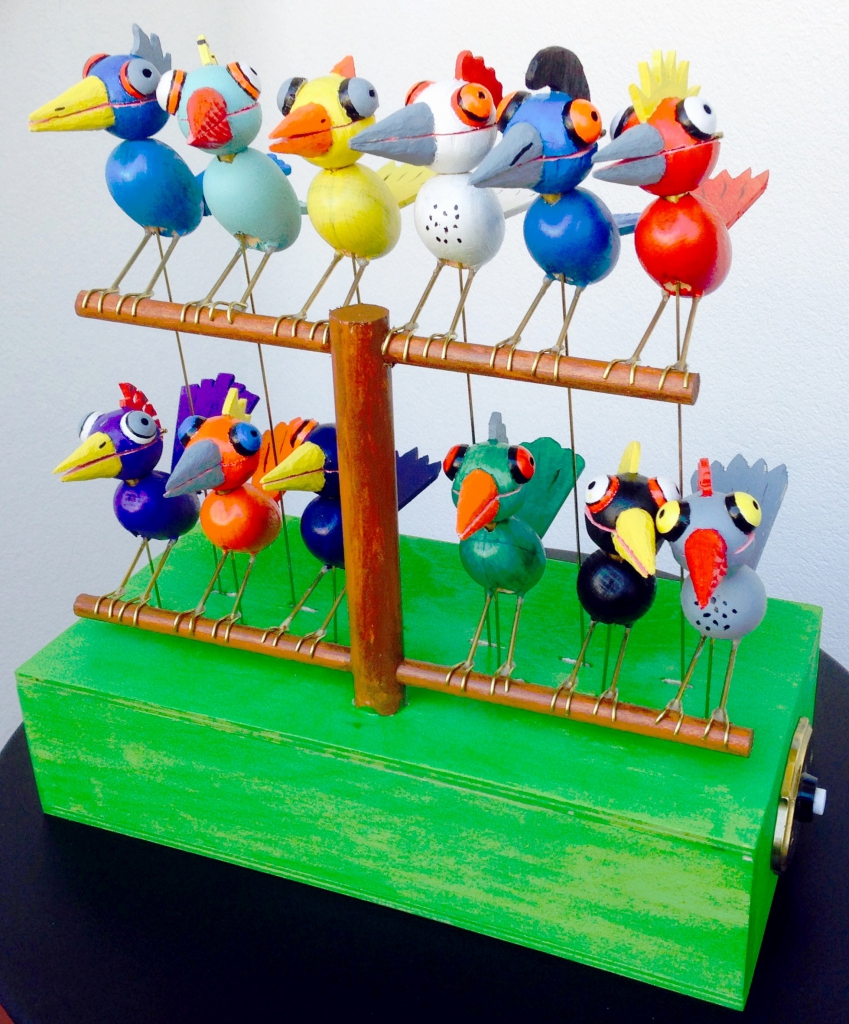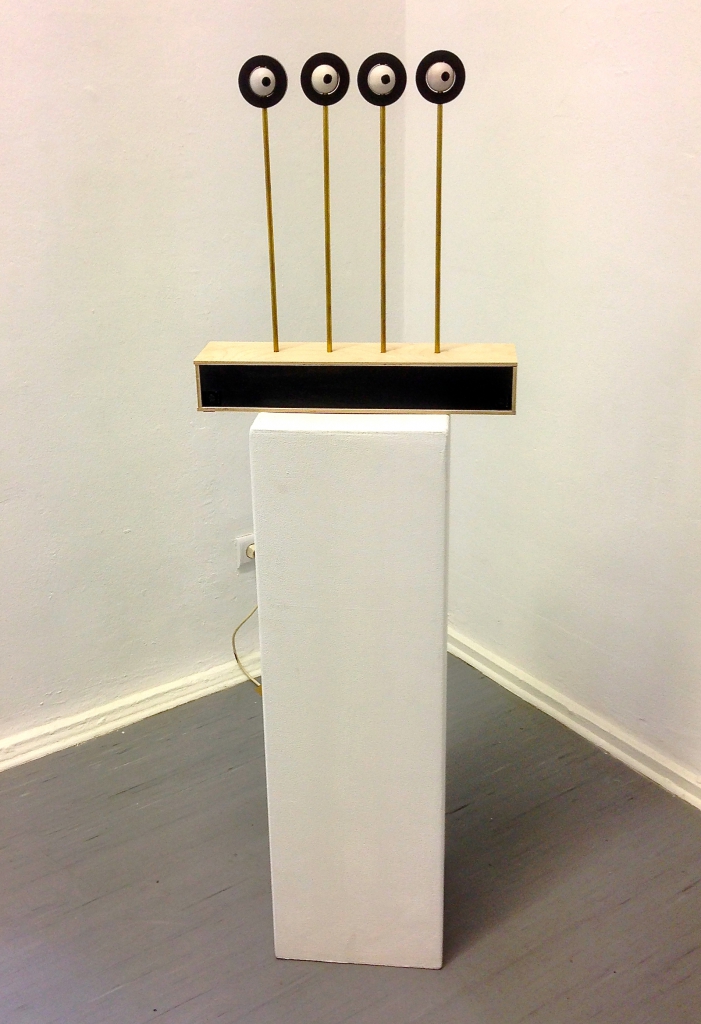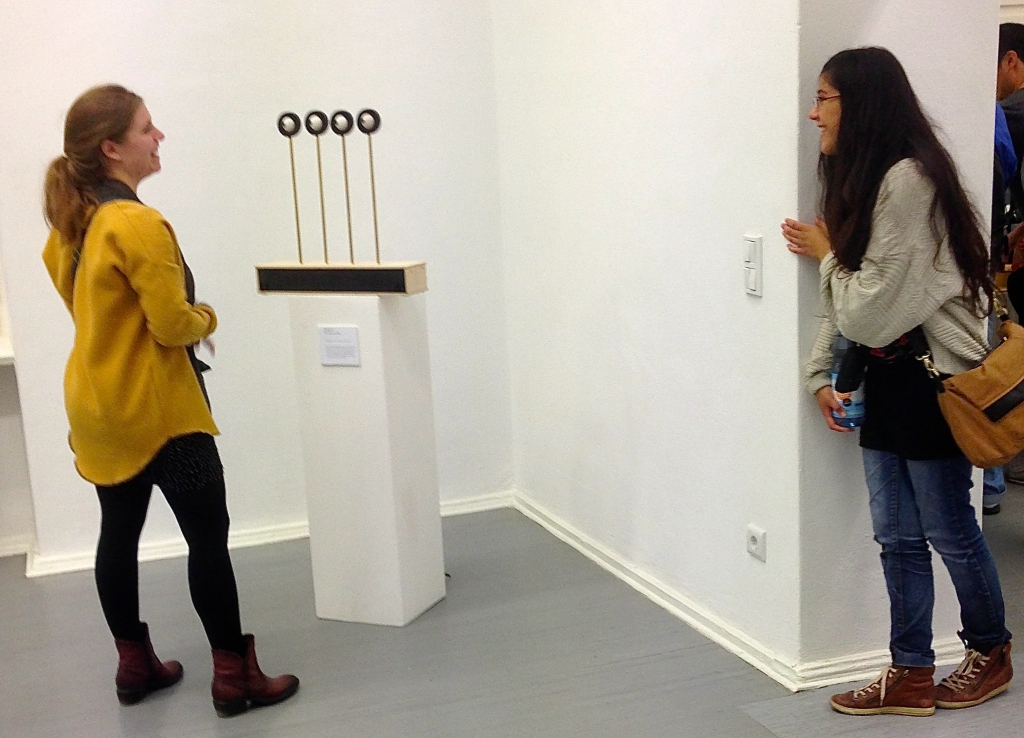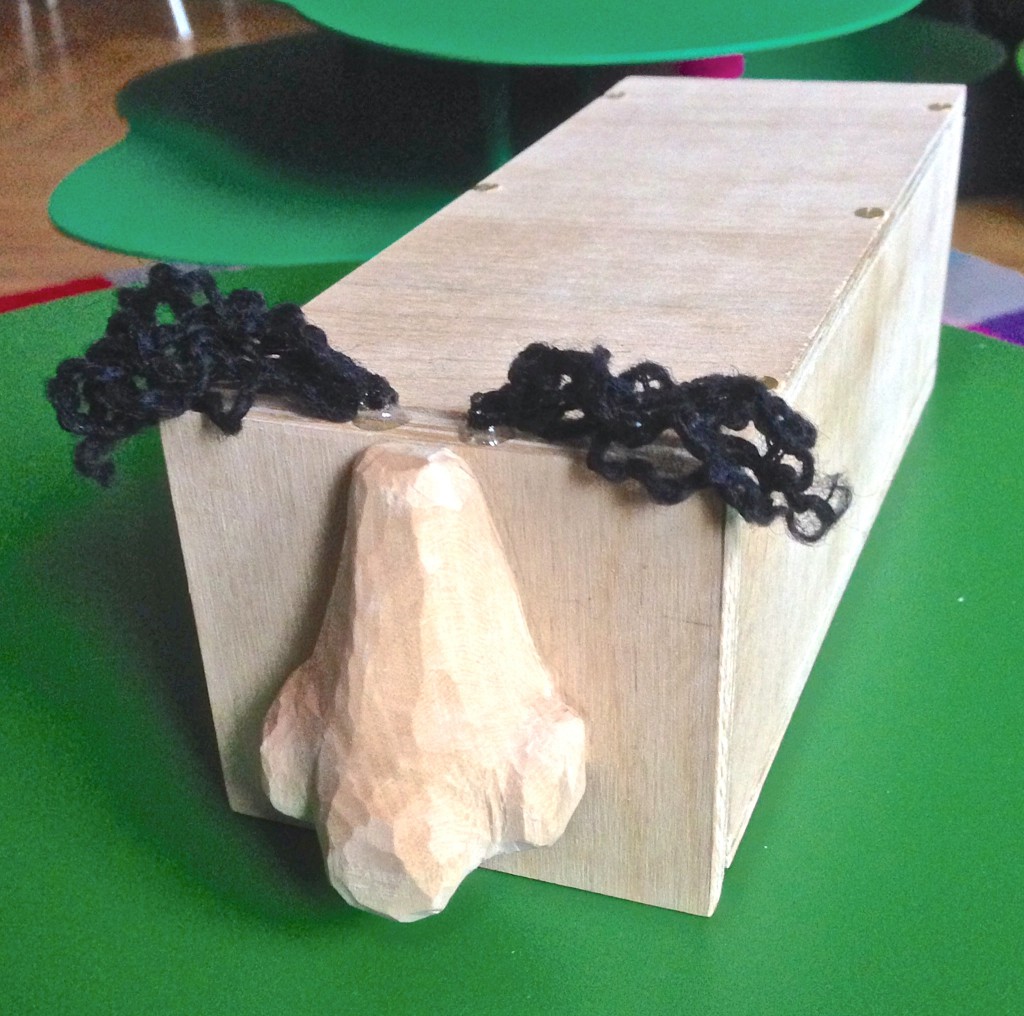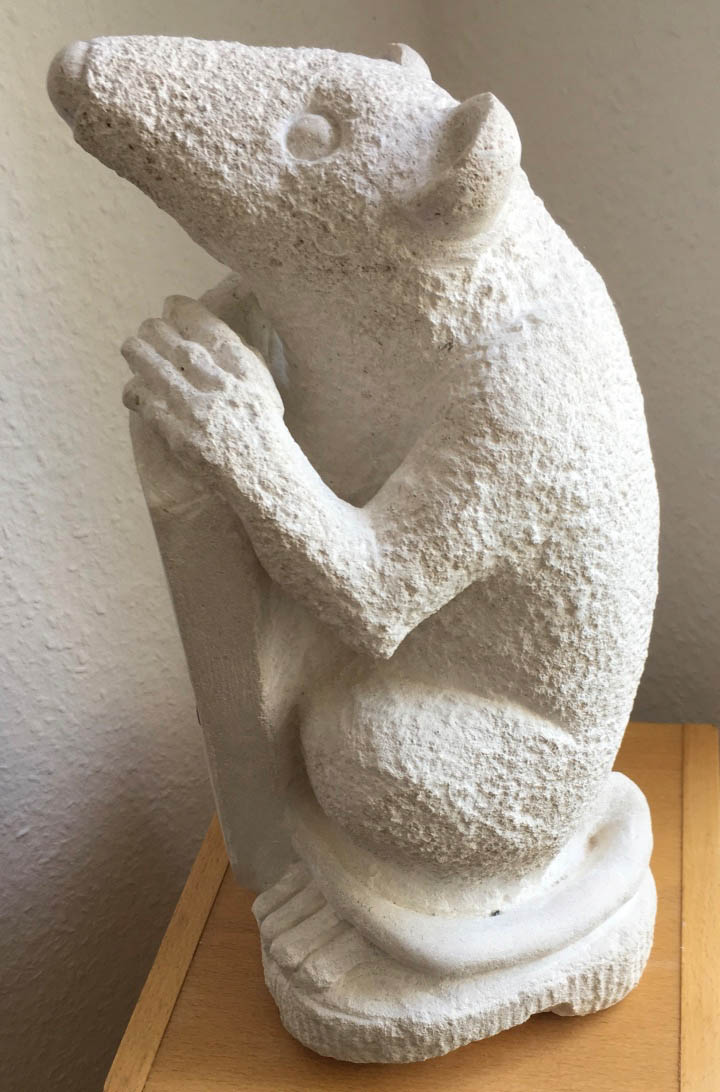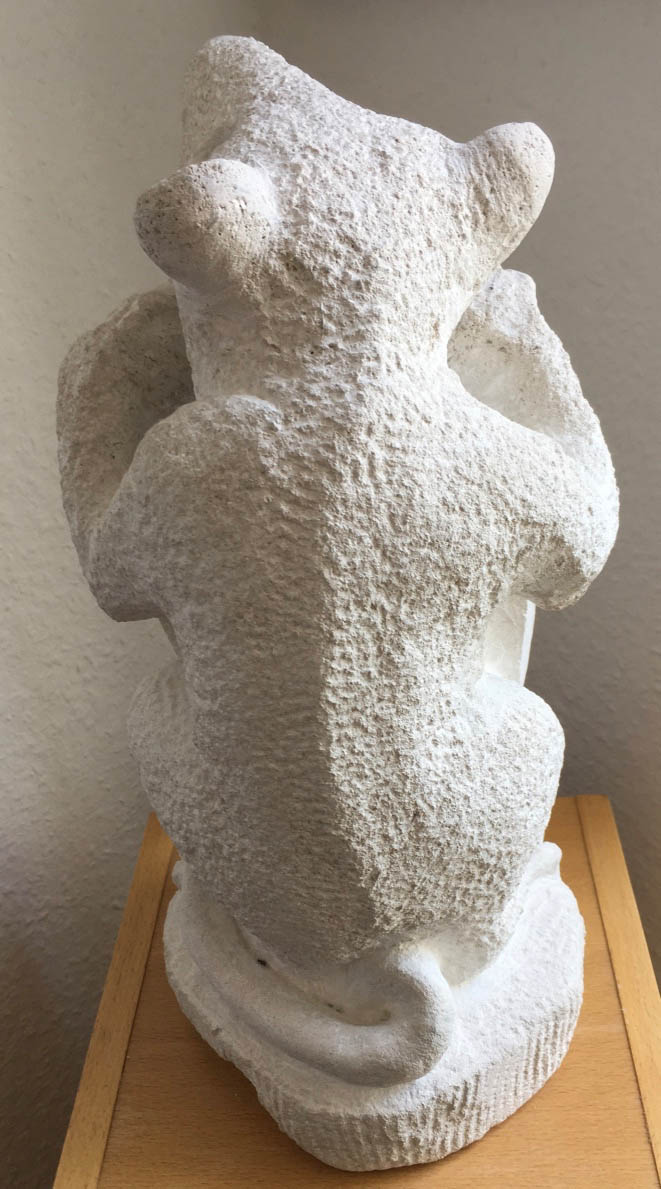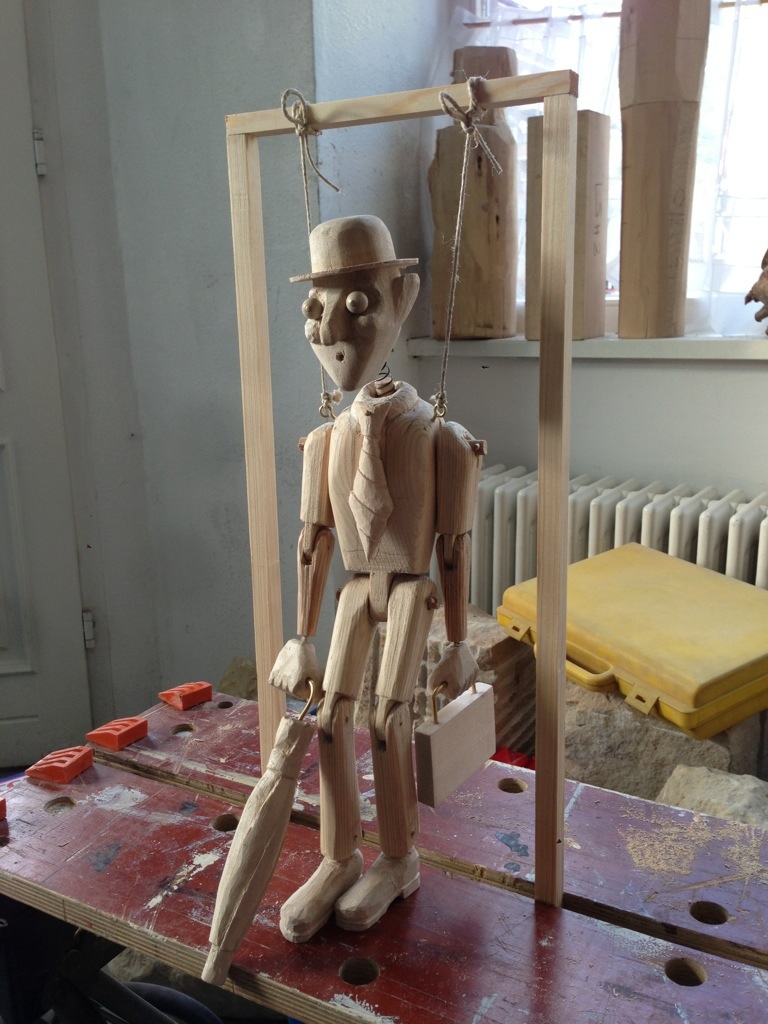May 2015
Twelve Tweeters
A clock with roots that occasionally hoots. The time it can tell without even a bell. Ask it nicely and it will tell you precisely, but if no one’s around it won’t make a sound. A dozen on their perch won’t leave you in the lurch, the assembled dawn chorus will sing something forus. To make time a pleasure – a real treasure – not just something to measure.
To Tell The Time
Push the button – there are two parts to the time
- For the first part, the birds stretch their necks to show the number of hours from 1 to 12. You can look out of the window to see if it’s morning or afternoon.
- For the second part, each bird is responsible for 5 minutes, so for example, if the fifth bird sings that means twenty-five past.
